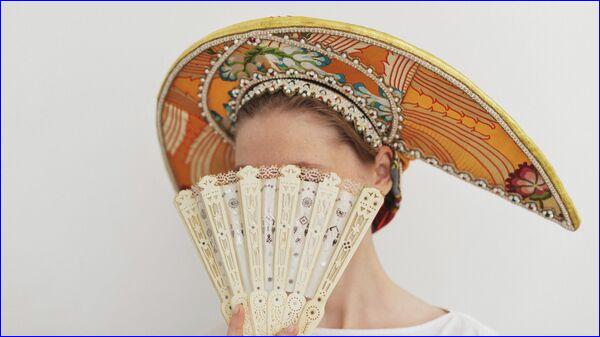


You created the first kokoshnik in 2014. How did you come up with the idea to start such a rare craft?
This element of women's costume has always fascinated me. In the gift shop you can find kokoshniks that look nothing like what they are actually wearing. I was interested in a certain item and sewed it the crown of the Arkhangelsk province, resembling a snowflake. But eight years ago, I had no mission to rekindle interest or save culture. I was just doing something that concerned me.
Kokoshnik invented in Russia?
Some scholars claim that it came from Byzantium. Others write that, judging by the results of the excavation, it is an ancient Russian invention.
I think people everywhere are faced with the same manifestations of nature, including human nature. So we see similar things everywhere. Any culture is a mixture of different cultures.
You yourself are a mixture of cultures ...
Yes, the father is Assyrian and the mother is Russian. I was born in Kazan, I live in Moscow. At the beginning of the twentieth century, the Assyrians fled from oppression. Nicholas gave them asylum. As a result, they settled around the planet.
Did any of your ancestors wear interesting headdresses?
Grandma always wore two braids plaited around her head. And she covered them with a scarf. According to ancient tradition, the girl would walk in a single braid and would not hide her hair until she got married.

In general, Russian headdresses can be divided into two groups: girls and women. The first allows you to show your hair loose or braided these can be various types of headbands and tiaras, like my first kokoshnik "Snowflake".
There are many local traditions in our country, which sometimes differ greatly from each other. There are traditions of village, city or status to indicate location.
Kokoshnik from the cover of One Manizhi Russian Woman It's also your work. In it, the singer came to the red, or rather, turquoise carpet of Eurovision in 2021. Reactions to the outfit were different: someone said it was a demonic symbol, someone joined a flash mob to support it on social networks.
This is a lunnik, a kokoshnik of the Vladimir province, 18th-19th. It has museum prototypes of centuries. A purely traditional Russian headdress, unmatched in any culture.
Such kokoshniki were worn in the Volga region and central Russia. They were larger or smaller in size, they were worn by town women in the 18th century. This is a typical title for that time. Expensive, like today's iPhone.
Your collection includes kokoshniks inspired by Cartier crowns. Tell us why this is a Russian story in the first place?
In 2021, the exhibition "Cartier: Continuing the Story" was held, dedicated to objects from the Hermitage. At the same time, a closed presentation of the new collection took place, in which the jewelry house brought crowns created 100 years ago for Russian princes and princesses. But if at the end of the 19th century Cartier was inspired by Russian ornaments and kokoshniks, now they decided to do the opposite. They invited me and I made a few titles using old technologies.
You are trying to revive the interest in traditional handicrafts in the Design Workshops. Any interest in this now?
Yes. As in the whole world. Modern designers are interested in the national costume, creating their own interpretation. I wish the number of masters dealing with ancient embroidery techniques to increase.
The most famous is the Luneville crochet or cross-stitch. But they came to Russia from abroad, along with fashion. I would like people to know more about ancient local techniques, ornamental features. It is a distinctive national feature and attractive to the whole world. We are interested in observing Japanese culture, we distinguish it easily. So it should be with Russian culture.
You're sewing pearls. How and when did it appear in Russia?
The first mentions date back to the 9th century. Nowhere else in the world does this technology exist. You may encounter this in some European cultures, but such high level of ornamental work existed only in Russia. And the stone itself was considered purely Russian: until the second half of the 19th century, our country was the main consumer of pearls in the world.
Are you afraid of competition from production technologies?
Not. Handwork is always valuable. When the photo came out, everyone was afraid that the painting would disappear. They said the theater would die when television was invented. When streaming platforms came along, they thought cinemas wouldn't exist. When electronic books were created, they prophesied death to paper books. But no such thing happened.

or register to post a comment.